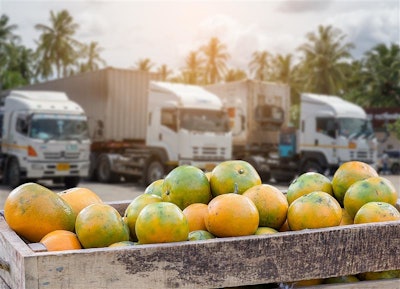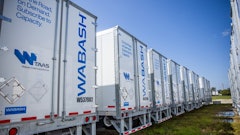
The food industry is a vibrant and ever-evolving sector, continually facing novel challenges and prospects. A pivotal component of this industry is food distribution, which is subject to many factors, encompassing technological advancements, consumer preferences, and regulatory changes. As the industry landscape transforms, food distributors confront the formidable task of meeting consumer demands in an ever-changing terrain.
Here are the challenges and opportunities that characterize food distribution and practical strategies to help businesses effectively address evolving consumer demands.
Challenges in food distribution
- Supply chain disruptions. Food distributors often face supply chain disruptions arising from natural weather events, transportation delays, and labor shortages. Such disruptions can lead to product scarcity and elevated costs, significantly impacting the profitability of food distributors.
- Rising costs. In food distribution, operational expenses like transportation, labor, and storage costs are prominent. Escalating fuel prices, rising wages, and mounting rent expenses compel food distributors to seek cost-cutting measures without compromising product quality or service standards.
- Food safety. Ensuring food safety is paramount to consumers, and it is incumbent upon food distributors to maintain stringent adherence to safety standards. This necessitates robust quality control measures, regulatory compliance, and regular product testing.
- Consumer demands. Consumer preferences constantly change, and food distributors must stay agile to remain competitive. With a growing emphasis on healthy, sustainable, and locally sourced products, meeting these dynamic demands while ensuring profitability is a pressing challenge.
- Ensuring that inventory is rotated properly is vital, for food distributors to keep products fresh and minimize waste. However managing rotation can be quite a challenge. One key issue is maintaining the order of expired-first-out (FEFO) or first-in-first-out (FIFO) stock rotation. FEFO involves sending out food items to their expiration date while FIFO means shipping out older received products before newer ones. Both methods require the organization of warehouse storage and order-picking processes. Technology such as robust warehouse management systems (WMS) can assist in successful inventory rotation, ensuring the freshest product on the shelf for the consumer.
Opportunities in food distribution
- Technology integration. Infusing technology into the food distribution industry opens avenues for streamlined operations, heightened efficiency, and cost reduction. Advanced logistics software enables optimized supply chain management and improved delivery timelines, while automated warehouses alleviate labor costs and enhance overall efficiency.
- E-commerce expansion. The flourishing e-commerce sector has created novel opportunities for food distributors to reach consumers directly. Online marketplaces and platforms provide a direct channel for food distributors to sell their products, bypassing traditional retail channels and reducing associated costs.
- Embracing sustainability. Consumers' heightened environmental consciousness allows food distributors to embrace sustainability practices. By sourcing sustainable products and adopting eco-friendly methods, they can cater to eco-conscious consumers while bolstering their brand image.
- Fostering innovation. Innovation is critical for food distributors to maintain a competitive edge. This entails developing novel products, exploring new distribution channels, and adopting cutting-edge technologies.
5. Specialty and organic foods. There is increasing consumer demand for fresh, high-quality specialty items like organic produce, gluten-free products, dairy-free, vegan etc. Distributors can develop procurement and supply chains to provide more specialty offerings.
Strategies for meeting consumer demands
- Harness technology. Leveraging technology can significantly enhance operational efficiency and enable food distributors to meet evolving consumer needs. Investing in logistics software, automated warehousing, and other technological advancements will streamline processes and drive customer satisfaction.
- Prioritize sustainability. Emphasizing sustainability practices resonates with environmentally conscious consumers. Food distributors can align with consumer values by sourcing sustainable products, reducing waste, and implementing eco-friendly packaging.
- Offer healthy and local products. Meeting consumer demands for healthier and locally sourced items necessitates collaboration with regional farmers and producers. Food distributors can tap into the growing market for health-conscious and locally supportive consumers by offering these products.
- Build customer relationships. Establishing solid bonds with customers is vital for meeting their demands effectively. Personalized service, consistent communication, and responsiveness to customer needs will foster loyalty and satisfaction.
- Nurture a culture of innovation. A culture of continuous improvement and innovation should be cultivated within food distribution businesses. Regularly assessing operations and identifying opportunities for increased efficiency, new product introductions, and technology adoption will ensure long-term relevance and success.
Amidst the dynamic challenges and opportunities within the food distribution industry, adapting and strategizing effectively is paramount. Embracing technological advancements, prioritizing sustainability, offering diverse and consumer-centric products, nurturing customer relationships, and fostering innovation are essential to address the ever-changing demands in food distribution. By proactively navigating this landscape, food distributors can thrive in a competitive and evolving market.



















